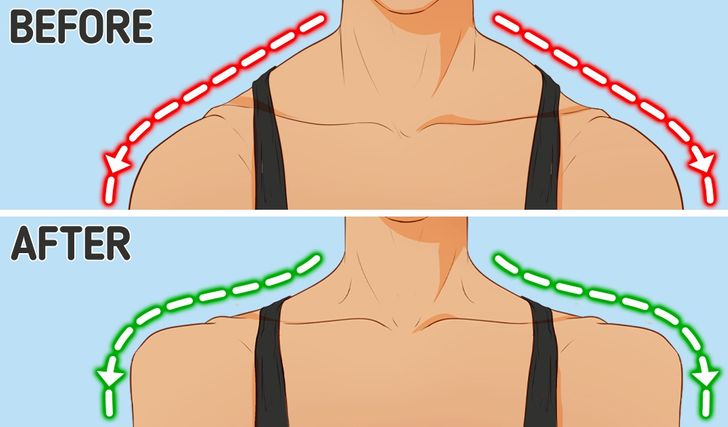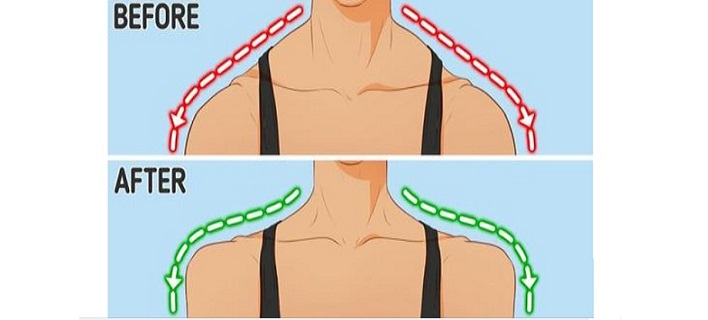It is estimated that the average person spends nearly 3 hours per day staring down at their smartphone, which can cause a forward head posture and rounded shoulders. This can result in unexpected health issues such as heartburn and incontinence.
At LieKnowhow, we understand the importance of maintaining good posture and want to share some simple exercises that you can practice at home. Plus, we have a bonus feature for you at the end of this article.
The lift-off exercise
- Stand upright with your neck elongated, avoiding tilting your head and keeping your gaze straight ahead.
- Place your hands behind your back, interlocking your fingers and positioning your palms on top of each other, as shown in the picture. Keep your arms slightly bent at the elbows.
- As you exhale, start pushing your arms backwards, lifting them away from your buttocks. You should feel some tension in your shoulder blades and upper back muscles.
- Return to the starting position.
- Repeat the exercise for 30 seconds, then switch the position of your hands.
By practicing this exercise regularly, you can improve your posture and reduce the risk of developing muscle tension and pain in your upper back and neck.
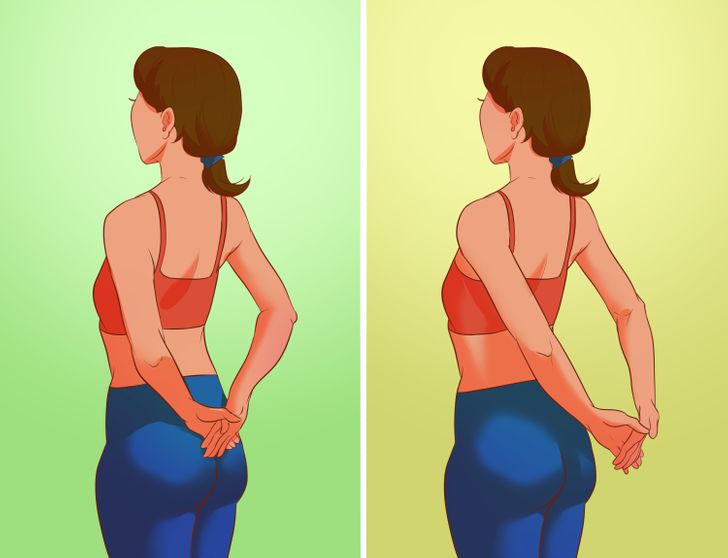
Forward head posture
- Stand with your feet hip-width apart.
- Place your hands behind your head with your elbows facing away.
- Slightly bend your knees and tilt your upper body slightly forward, maintaining a straight back and keeping your head looking downwards.
- Contract your neck muscles and start pushing your head backwards against your hands. Make sure your head doesn’t actually move backwards.
- Hold this position for 20 seconds.
This exercise can help improve the strength and flexibility of your neck muscles, which can lead to better posture and reduced risk of neck pain or discomfort.
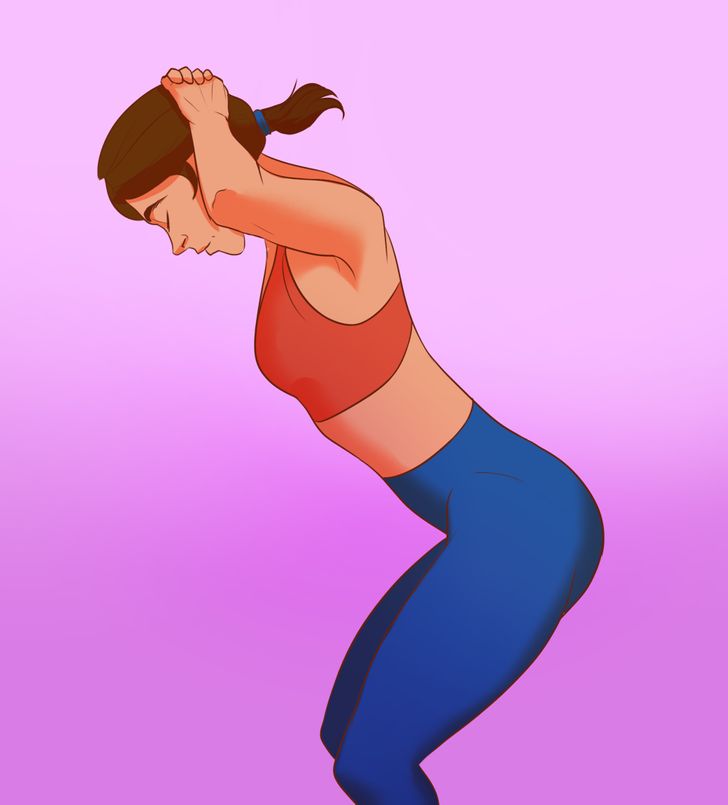
Shoulder rotations
- Lie on your left side, with your hand resting on a pillow beneath your head. Bend your knees slightly.
- Bend your right arm at a 90-degree angle and make a fist. Position your hand on your stomach so that your fist faces downwards, as shown in the picture.
- Start lifting your hand upwards, clenching your fist and feeling the tension in your arm muscles. You can also use a small dumbbell to increase the intensity of the exercise. Remember to maintain the 90-degree angle for your arm.
- Repeat the exercise for 45 seconds, then switch sides and repeat the same steps.
By doing this exercise, you can strengthen the muscles in your arms and shoulders, which can help improve your posture and reduce the risk of developing muscle pain or tension in these areas.
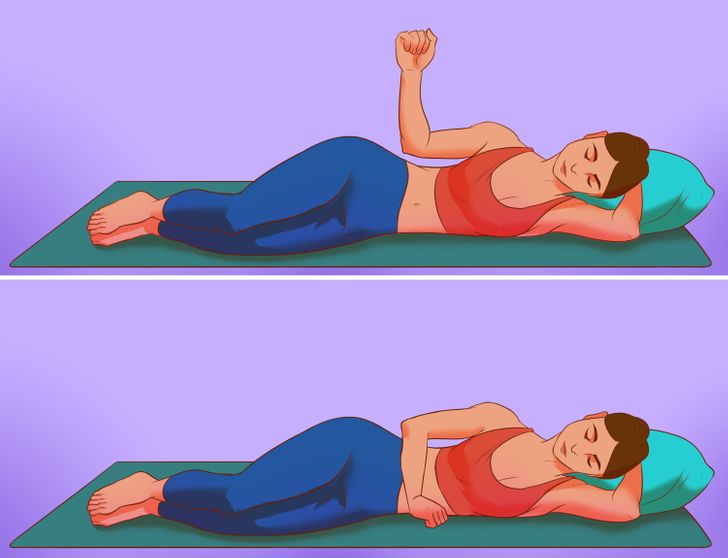
Resistance exercise
- Lie on your right side, with your head resting on a pillow and your legs bent.
- Extend your right arm in front of you, making a fist and holding it up at a 90-degree angle. Bend your left arm at the elbow and rest your left palm on the floor.
- Start pushing down with your left palm onto your right fist, as shown in the picture. Keep resisting with your right fist, bringing it down to the floor at a 90-degree angle. You should feel constant tension and resistance in your arm muscles.
- Keep resisting for 15 seconds, then switch sides and repeat the same steps.
By doing this exercise, you can strengthen the muscles in your arms and shoulders, which can help improve your posture and reduce the risk of developing muscle pain or tension in these areas.
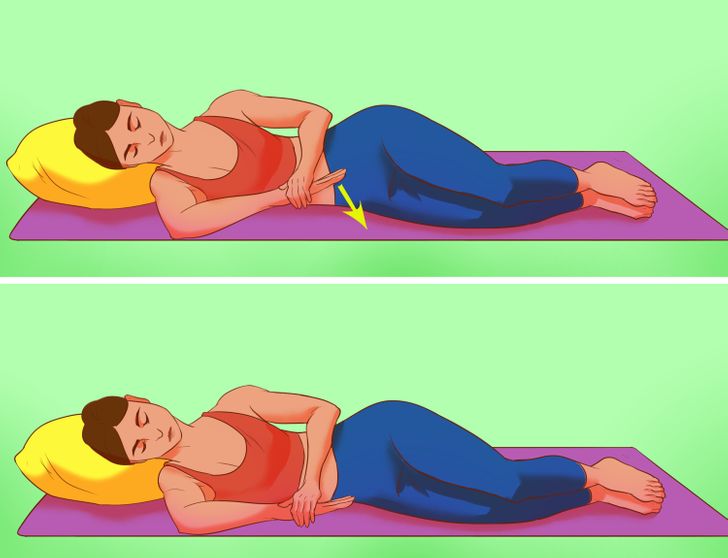
Levator scapulae stretch
- Gently tilt your head to the left side.
- With your left hand, grasp over the top of your head.
- Apply a gentle force with your head towards the left, feeling a slight resistance.
- Hold this position for 20 seconds, then repeat the same steps on the opposite side.
- Do three repetitions for each side.
By doing this exercise, you can help release tension in your neck muscles, improve your range of motion, and promote better posture.
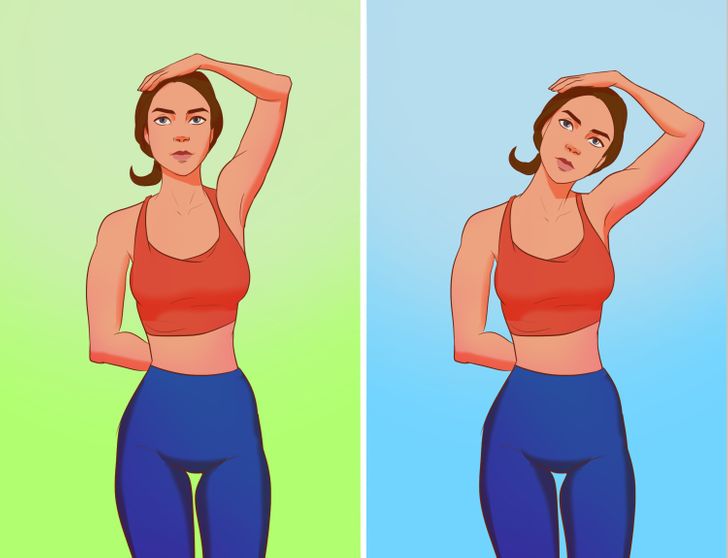
Chin tucks
- Sit upright or stand up with your ears directly over your shoulders and look straight ahead.
- Place your forefinger on your chin.
- Without moving your finger, start pulling your chin and head straight back.
- You should feel a stretch at the base of your head and top of your neck.
- Hold this position for 10 seconds.
- Return to the neutral position.
- Repeat the same steps for a total of 10 times.
By doing this exercise, you can help improve your posture, strengthen the muscles in your neck and spine, and reduce the risk of developing neck pain or stiffness.
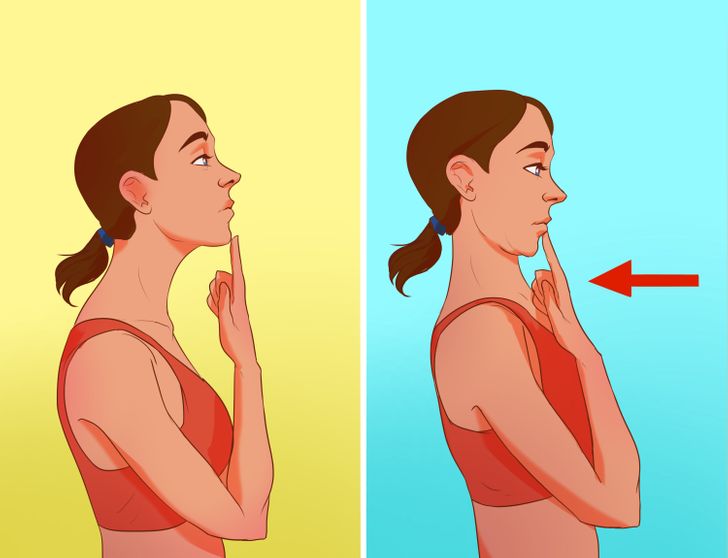
Rolled towel exercise
- Place the rolled towel around your neck and hold the ends with your hands, as shown in the picture.
- Slowly look up as far as you can, rolling your head over the towel.
- Apply gentle pressure on the towel as you extend your head back.
- Don’t hold the position and return to a neutral one.
- Repeat this movement 10 times.
This exercise can help stretch and strengthen the muscles in your neck and upper back, promoting better posture and reducing the risk of developing neck pain or stiffness.
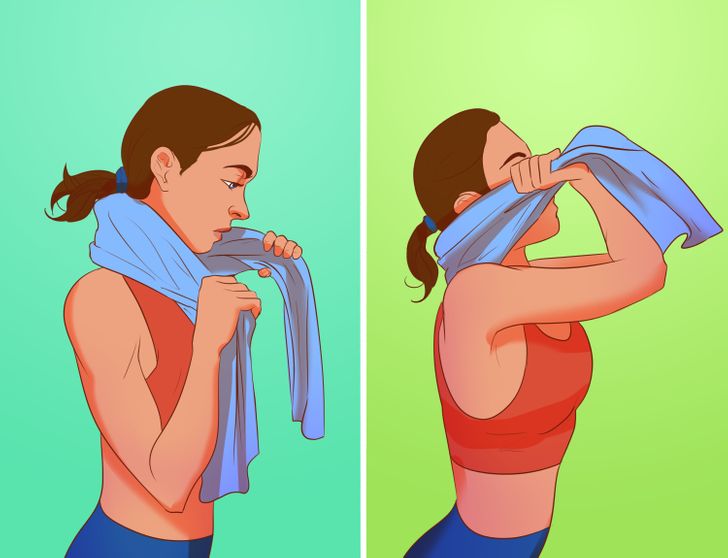
Neck isometrics
- Place your palm against your forehead and push back with your neck muscles. Hold for 10 seconds, relax, and repeat 5 times.
- Place your palm against the side of your head and push your head to the side, using your neck muscles to resist. Repeat 5 times on each side.
- Place your palm against the back of your head and push back, using your neck muscles to resist. Repeat 5 times.
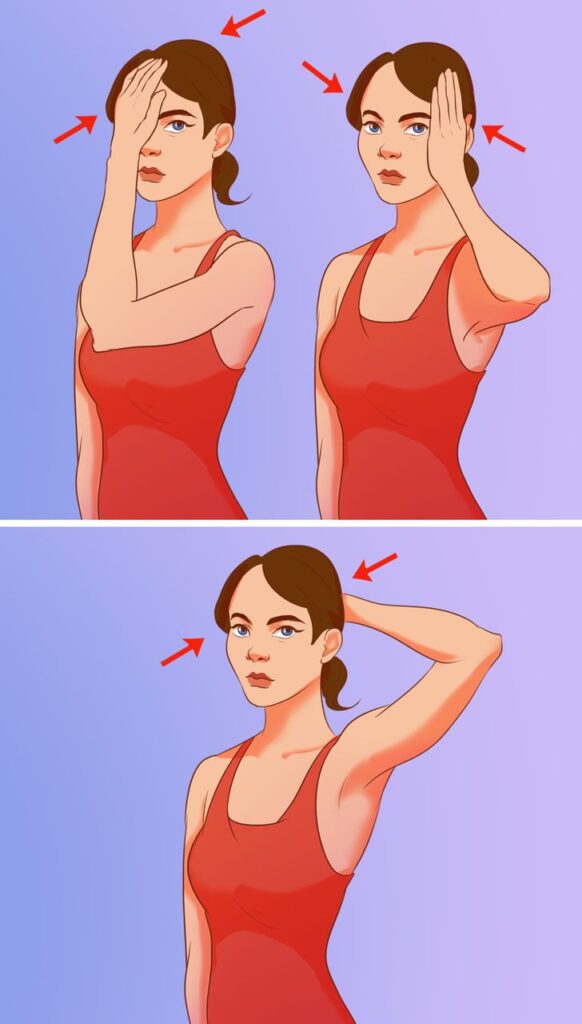
How long it takes to fix rounded shoulders
Having rounded shoulders can indicate poor posture. It’s essential to keep in mind that posture is a habit that can take a long time to correct if it has been formed over many years. However, the good news is that with daily exercise and proper technique, you can see results relatively quickly. Moreover, there are exercises that can help relieve neck pain or discomfort. It is important to exercise regularly to keep your spine healthy.
So, what exercises do you do to alleviate neck pain, and how often do you exercise to maintain a healthy spine?
